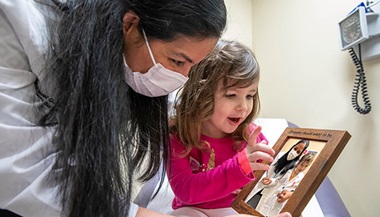Biliary Cirrhosis / Bile Duct Cancer
What is biliary cirrhosis?
Biliary cirrhosis is a rare form of liver cirrhosis caused by disease or defects of the bile ducts. Symptoms usually include cholestasis (accumulation of bile in the liver). There are two types of biliary cirrhosis:
-
Primary biliary cirrhosis. Inflammation and destruction of bile ducts in the liver, usually due to an autoimmune disease in which the body's immune system mistakenly attacks healthy tissues.
-
Secondary biliary cirrhosis. This results from prolonged bile duct obstruction or narrowing or closure of the bile duct for other reasons, such as a tumor.
What is bile duct cancer (cholangiocarcinoma)?
Next to gallstones, cancer is the most common cause of bile duct obstruction. The majority of bile duct cancers develop in the part of the ducts that are outside the liver and are sometimes referred to as extrahepatic tumors. Most bile duct cancers are adenocarcinomas, which means they develop from the glandular cells of the bile duct.
What are the symptoms of bile duct cancer?
The following are the most common symptoms of bile duct cancer. However, each individual may experience symptoms differently. Symptoms may include:
-
Jaundice. Yellowing of the skin and eyes.
-
Abdominal pain
-
Poor appetite
-
Weight loss
-
Itching
-
Pale stools
-
Dark urine
-
Fever
The symptoms of bile duct cancer may resemble other medical conditions or problems. Always consult your doctor for a diagnosis.
How is bile duct cancer diagnosed?
In addition to a complete medical history and physical examination, diagnostic procedures for bile duct cancer may include the following:
-
Ultrasound (also called sonography). A diagnostic imaging technique that uses high-frequency sound waves to create an image of the internal organs. Ultrasounds are used to view internal organs of the abdomen, such as the liver, spleen, and kidneys and to assess blood flow through various vessels.
-
Computed tomography scan (CT or CAT scan). A diagnostic imaging procedure using a combination of X-rays and computer technology to produce horizontal, or axial, images (often called slices) of the body. A CT scan shows detailed images of any part of the body, including the bones, muscles, fat, and organs. CT scans are more detailed than general X-rays.
-
Magnetic resonance imaging (MRI). A diagnostic imaging procedure that uses a combination of large magnets, radiofrequencies, and a computer to produce detailed images of organs and structures within the body.
-
Cholangiography. X-ray examination of the bile ducts using an intravenous dye (contrast).
-
Biopsy. A procedure in which tissue samples are removed (with a needle or during surgery) from the body for examination under a microscope.
-
Endoscopic retrograde cholangiopancreatography (ERCP). A procedure that allows the doctor to diagnose and treat problems in the liver, gallbladder, bile ducts, and pancreas. The procedure combines X-ray and the use of an endoscope, which is a long, flexible, lighted tube. The scope is guided through the patient's mouth and throat, then through the esophagus, stomach, and duodenum. The doctor can examine the inside of these organs and detect any abnormalities. A tube is then passed through the scope and into the bile duct, and a dye is injected that will allow the internal organs to appear on an X-ray.
What is the treatment for bile duct cancer?
Specific treatment for bile duct cancer will be determined by your doctor based on:
-
Your age, overall health, and medical history
-
Extent of the disease
-
Cause of the disease
-
Your tolerance for specific medications, procedures, or therapies
-
Expectations for the course of the disease
-
Your opinion or preference
Treatment may include:
-
Surgery. Surgery may be necessary to remove cancerous tissue, as well as nearby noncancerous tissue. Surgery may also be used to relieve blockage of the bile duct to palliate or relieve symptoms.
-
Stent placement. If the bile duct is blocked due to cancer, a thin tube, called a stent, may be placed in the bile duct. It helps drain bile that builds up in the area. This is done to bypass the blockage that causes symptoms, such as pain or yellow eyes and skin called jaundice. A stent may be placed temporarily until surgery is performed to remove the tumor, or a permanent stent may be placed.
-
External radiation (external beam therapy). External radiation is a treatment that precisely sends high levels of radiation directly to the cancer cells. The machine is controlled by the radiation therapist. Since radiation is used to kill cancer cells and to shrink tumors, special shields may be used to protect the tissue surrounding the treatment area. Radiation treatments are painless and usually last a few minutes. Radiation therapy may be given after surgery to kill small areas of cancer that may not be seen during surgery, or instead of surgery. Radiation may also be used to ease (palliate) symptoms, such as pain, bleeding, or blockage.
-
Chemotherapy. Chemotherapy is the use of anticancer drugs to treat cancerous cells. In most cases, chemotherapy works by interfering with the cancer cell's ability to grow or reproduce. Different groups of drugs work in different ways to fight cancer cells. The oncologist will recommend a treatment plan for each individual.





